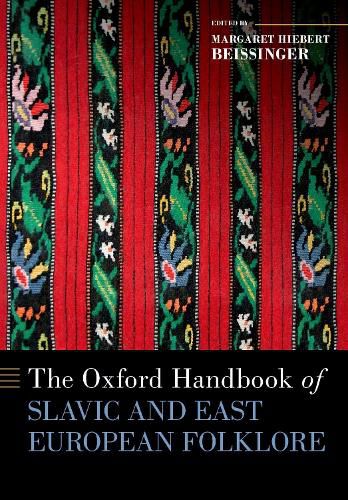Readings Newsletter
Become a Readings Member to make your shopping experience even easier.
Sign in or sign up for free!
You’re not far away from qualifying for FREE standard shipping within Australia
You’ve qualified for FREE standard shipping within Australia
The cart is loading…






The Oxford Handbook of Slavic and East European Folklore provides a wide-ranging survey of the oral traditions of the Slavic and East European world. It covers national, ethnic, racial, cultural, linguistic, and religious groups extending from the eastern zones of Russia to the western borders of the Czech Republic and from Estonia along the Baltic Sea to Greece at the southern tip of the Balkan Peninsula. The volume presents this broad world area - loosely connected by circumstances of geography, history, and politics - as a large and diverse cultural continuum. In forty-three chapters written by scholars ranging from folklorists who are natives of the Slavic and East European region to British and North American specialists in the field, Editor-in-Chief Margaret Hiebert Beissinger presents an extensive array of distinctive yet comparable traditions, rituals, and genres. Divided into five sections, the volume includes: the folklore and lyric genres of the life cycle (wedding, birth, and death rites); calendrical-cycle traditions, dance, magic, and folk belief; traditional prose and poetic narrative; oral traditions among minority ethno-religious and racial communities, as well as folk and popular music and song; and the folklore of everyday life, including aphoristic verbal forms and material culture. The volume's chapters focus on folklore of the nineteenth through the twenty-first centuries, from the very "traditional," to contemporary issues that influence folklore and expressive culture, such as life-changing pandemics, ethnic conflict, and war, as well as evolving gender roles. The handbook presents a wide assortment of materials for an audience of students and specialists alike: folklorists, ethnographers, anthropologists, ethnomusicologists, and literature scholars, as well as others who wish to explore the rich oral traditions of the Slavic and East European world.
$9.00 standard shipping within Australia
FREE standard shipping within Australia for orders over $100.00
Express & International shipping calculated at checkout
Stock availability can be subject to change without notice. We recommend calling the shop or contacting our online team to check availability of low stock items. Please see our Shopping Online page for more details.
The Oxford Handbook of Slavic and East European Folklore provides a wide-ranging survey of the oral traditions of the Slavic and East European world. It covers national, ethnic, racial, cultural, linguistic, and religious groups extending from the eastern zones of Russia to the western borders of the Czech Republic and from Estonia along the Baltic Sea to Greece at the southern tip of the Balkan Peninsula. The volume presents this broad world area - loosely connected by circumstances of geography, history, and politics - as a large and diverse cultural continuum. In forty-three chapters written by scholars ranging from folklorists who are natives of the Slavic and East European region to British and North American specialists in the field, Editor-in-Chief Margaret Hiebert Beissinger presents an extensive array of distinctive yet comparable traditions, rituals, and genres. Divided into five sections, the volume includes: the folklore and lyric genres of the life cycle (wedding, birth, and death rites); calendrical-cycle traditions, dance, magic, and folk belief; traditional prose and poetic narrative; oral traditions among minority ethno-religious and racial communities, as well as folk and popular music and song; and the folklore of everyday life, including aphoristic verbal forms and material culture. The volume's chapters focus on folklore of the nineteenth through the twenty-first centuries, from the very "traditional," to contemporary issues that influence folklore and expressive culture, such as life-changing pandemics, ethnic conflict, and war, as well as evolving gender roles. The handbook presents a wide assortment of materials for an audience of students and specialists alike: folklorists, ethnographers, anthropologists, ethnomusicologists, and literature scholars, as well as others who wish to explore the rich oral traditions of the Slavic and East European world.